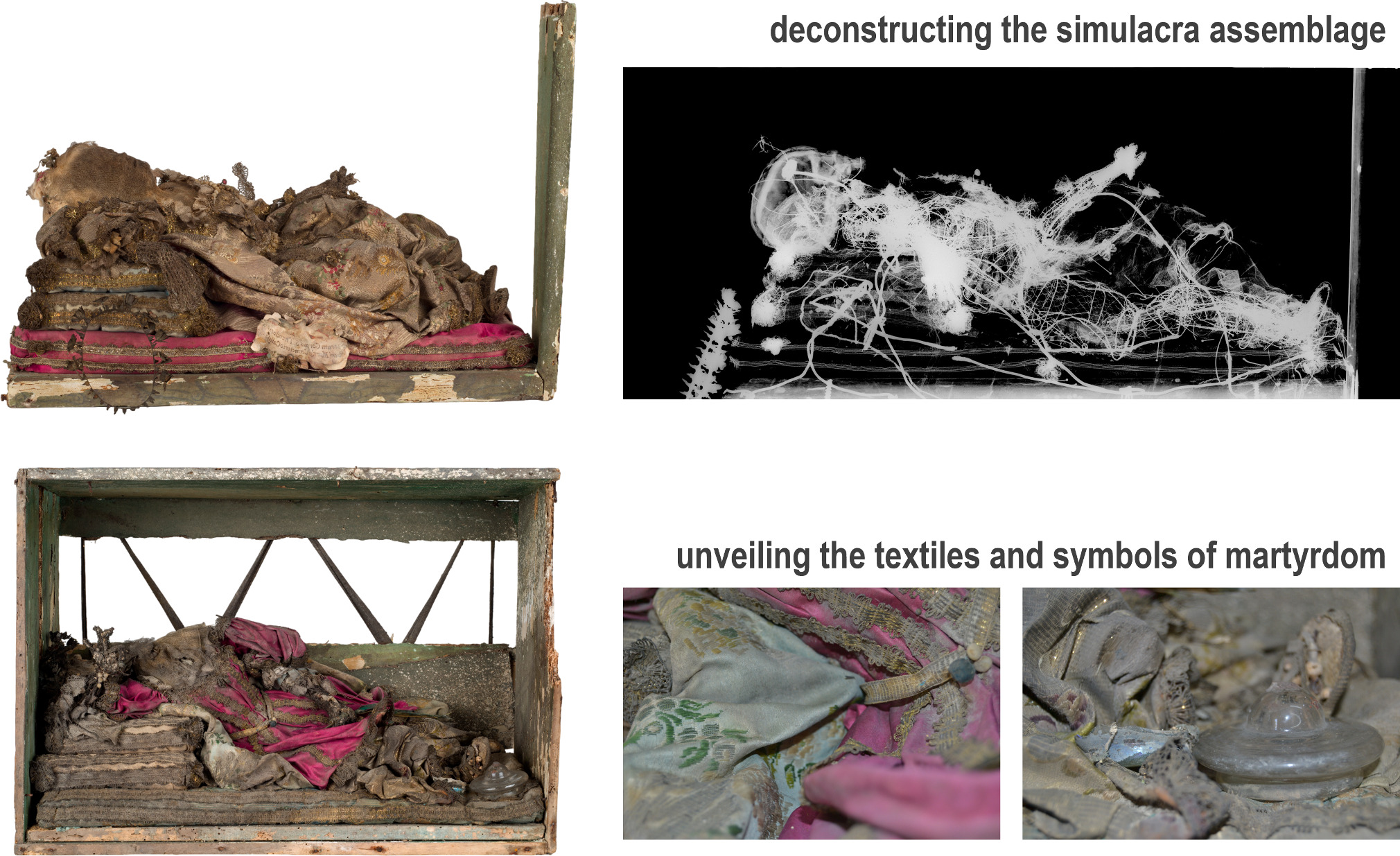https://doi.org/10.1140/epjp/s13360-025-06356-3
Regular Article
The study of two impressive simulacra at Santa Casa da Misericórdia de Almada, Portugal
1
HERCULES Laboratory/IN2PAST, University of Évora, Largo Marquês de Marialva 8, Évora, Portugal
2
Chemistry and Biochemistry Department, Sciences and Technology School, University of Évora, Rua Romão Ramalho 59, Évora, Portugal
3
Research Center for the Science and Technology of the Arts (CITAR), School of Arts, Universidade Católica Portuguesa, Rua de Diogo Botelho 1327, Porto, Portugal
4
CIDEHUS, Palácio do Vimioso, University of Évora, Largo Marquês de Marialva 8, Évora, Portugal
5
History Department, Social Sciences School, University of Évora, Largo dos Colegiais 2, Évora, Portugal
6
Laboratório José de Figueiredo, Museus e Monumentos de Portugal, Rua das Janelas Verdes, Lisbon, Portugal
a
tasf@uevora.pt
b
mrmpn@uevora.pt
Received:
15
November
2024
Accepted:
23
April
2025
Published online:
18
June
2025
Simulacra, or full-body reliquaries of corpi santi, have largely been overlooked in the discourse of the past century by the Church, the general public, and scholars. This work investigates two noteworthy cases among simulacra—two young individuals, St. Primogenita and St. Theodore—from Santa Casa da Misericórdia de Almada in Portugal. Based on a historical and analytical approach, the study examines the simulacra context, assembly methods, materials, symbols of martyrdom, and adornments. Their possible arrival in Portugal in the late eighteenth century is supported by the Bishop's seal and textile features that reflect the fashion of that period. Radiographic imaging and particularly borescope inspections revealed distinct assembly techniques, with St. Theodore displaying meticulous anatomical assembly, while St. Primogenita's construction is less precise. However, access to the cranium fragments of St. Primogenita revealed an elaborate consolidation method. SEM–EDS, FT-IR, and Py-GC–MS analyses identified a fibrous material coated with a dark brown paste, likely used to bond the unfused parts of the ectocranium fragments of a young individual, as well as a paste applied to reinforce the endocranium. Martyrdom symbols further distinguished the simulacra, with St. Primogenita adorned with a silk petal crown attached using animal glue, whereas St. Theodore's crown was crafted from pigment-dyed cellulosic materials. LC-DAD-MS analysis revealed the natural dyes used in coloured threads. Only St. Primogenita retained fragments from a phial of blood, where a creative method may have been employed to emphasise the blood content. This investigation highlighted the complexity and artistry behind these simulacra.
Supplementary Information The online version contains supplementary material available at https://doi.org/10.1140/epjp/s13360-025-06356-3.
© The Author(s) 2025
 Open Access This article is licensed under a Creative Commons Attribution 4.0 International License, which permits use, sharing, adaptation, distribution and reproduction in any medium or format, as long as you give appropriate credit to the original author(s) and the source, provide a link to the Creative Commons licence, and indicate if changes were made. The images or other third party material in this article are included in the article's Creative Commons licence, unless indicated otherwise in a credit line to the material. If material is not included in the article's Creative Commons licence and your intended use is not permitted by statutory regulation or exceeds the permitted use, you will need to obtain permission directly from the copyright holder. To view a copy of this licence, visit http://creativecommons.org/licenses/by/4.0/.
Open Access This article is licensed under a Creative Commons Attribution 4.0 International License, which permits use, sharing, adaptation, distribution and reproduction in any medium or format, as long as you give appropriate credit to the original author(s) and the source, provide a link to the Creative Commons licence, and indicate if changes were made. The images or other third party material in this article are included in the article's Creative Commons licence, unless indicated otherwise in a credit line to the material. If material is not included in the article's Creative Commons licence and your intended use is not permitted by statutory regulation or exceeds the permitted use, you will need to obtain permission directly from the copyright holder. To view a copy of this licence, visit http://creativecommons.org/licenses/by/4.0/.





